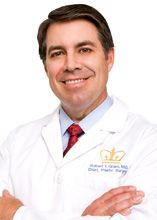How to Reap the Benefits of Mid-facelift Surgery
Although there are a variety of techniques to rejuvenate the face, mid-facelift surgery can be an effective way to achieve that goal.

From non-surgical injectable treatments like Botox and Juvederm, to surgical interventions like eyelid surgery and neck lifts, cosmetic surgery patients are always on the lookout for the best anti-aging procedures to maintain their youthful appearance.
That said, every patient shows signs of aging differently. For some patients, those signs may include laugh lines around the mouth or sagging in the cheeks, though other patients may experience drooping in the eyes or wrinkling in the brow. Therefore, when we speak with our patients about facial rejuvenation, there are a wide variety of cosmetic procedures to educate them about.
Every facial rejuvenation procedure or treatment targets a different area of the face, which may or may not help patients achieve their desired results. Although there are a variety of techniques to rejuvenate the face, I feel the mid-facelift, in many cases, can be an effective way to achieve that goal.
Since many patients are unaware of the procedure, I educate mine by explaining that mid-facelift surgery targets the middle areas of the face, such as sagging, drooping cheeks; nasal fold lines, also known as laugh lines; and the lower eyes, including the eyelids and bags underneath the eyes. However, I feel the mid-facelift is particularly good for patients who are looking to elevate their cheeks and tighten the muscles beneath them.
Similar to other plastic surgery procedures, there are several different techniques medical professionals can utilize when performing a mid-facelift to achieve the patient’s desired results. The first involves making an incision in the lower lash line, which allows access to the cheeks and lower eyelids where excess tissue can be removed, muscle tissue can be adjusted, and the middle of the face can be lifted to help smooth age lines.
In some cases, incisions are made in the nasolabial fold. I feel this approach is better suited for those who are looking for a vertical lift, rather than horizontal corrections. In either case, I always find this technique produces a smoother, more youthful-looking face.
The second technique is performed through 2 incisions placed at the temples, so the scars are hidden by the hairline. By approaching the mid-facelift from this location, we are able to lift the skin and muscles in the face both vertically and diagonally. The endoscopic cameras also allow for better viewing of the procedure from the inside, which makes this technique a bit more involved.
The endoscopic technique is known to provide even more dramatic results. Nevertheless, I always explain both options to my patients so they better understand not only the procedure, but also the results they can expect from one technique over the other.
In addition, I always ensure to discuss the recovery time of any procedure, because it is important for patients to understand what their downtime and limitations will be post-surgery. Since mid-facelift surgery is more targeted than other facelift procedures, the healing process is often shorter with less bruising and swelling. Therefore, I generally tell my mid-facelift patients that they will be able to resume mild activity within a week and see the full results of the procedure shortly thereafter.
Like other plastic surgery procedures, a mid-facelift can be paired with other facial rejuvenation methods to produce the best possible results. During a consultation appointment, I strongly suggest that you find out your patients’ objectives and then inform them of their options. After all, it is our job to help patients look and feel their best at any age.
Robert T. Grant, MD, MSc, FACS, is Chief of the combined Divisions of Plastic Surgery at New York-Presbyterian Hospital-Columbia University Medical Center and New York-Presbyterian Hospital-Weill Cornell Medical Center. He is also Associate Clinical Professor of Surgery in the College of Physicians and Surgeons at Columbia University and Adjunct Associate Professor of Clinical Surgery at Weill Cornell Medical College. For more information about Dr. Grant or to contact him, visit his website at www.robertgrantmd.com.